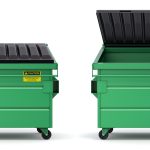Today’s manufacturers increasingly demand higher standards from their production partners. Yet, the parts they expect to be duplicated faster and with great attention to detail and tolerance specifications are increasingly becoming more complex. The components are more intricate in shape and style. As a result, machine shops are installing multi-axis machining centers to address these issues.
What Is Multi-Axis Machining?
The process of multi-axis machining is “subtractive.” This indicates the machinery operates to remove material through any of the following methods:
* Milling
* Water jet cutting
* Laser cutting
While a typical CNC machine possesses three axes, the multi-axis machinery has more than this number. While the typical 3-axis CNC machine operates by holding the working piece still while the cutting tool maneuvers, the multi-axis machine allows both parts to move simultaneously. This offers the machinist more benefits.
Benefits of Multi-Axis Machines
Multi-axis machining provides its operators with a variety of tangible benefits. Among them are:
* Decreased labor: A multi-axis machine can turn a workpiece automatically. It does not require the machinist to adjust it
* Better-quality surface finish: The process allows the application of a customized finish
* Increased Market Base: This machinery can tackle complex parts of all sizes, therefore, expanding the market capabilities of a machine shop. The parts can range from the simple to the most complex including those for high-performance products e.g. airplane propellers, turbine blades
Moreover, with this type of equipment, a machinist can use shorter cutting tools producing higher quality parts faster.
Multi-Axis Machining: A Better Way to Machine
Multi-axis machining is one way to address the increasing complexity of producing today’s components. For those who work with metal, such as fabricators and machinists, it is increasingly becoming common to find multi-axis machines in their shops. In many cases, these machines are not only fast but offer a better way to machine intricate components accurately and with precise, tight tolerances.





